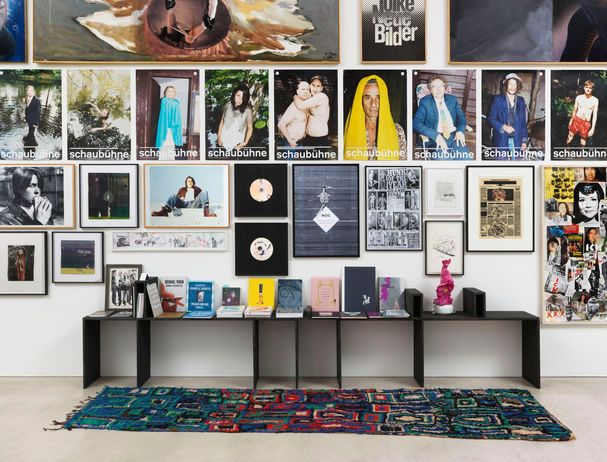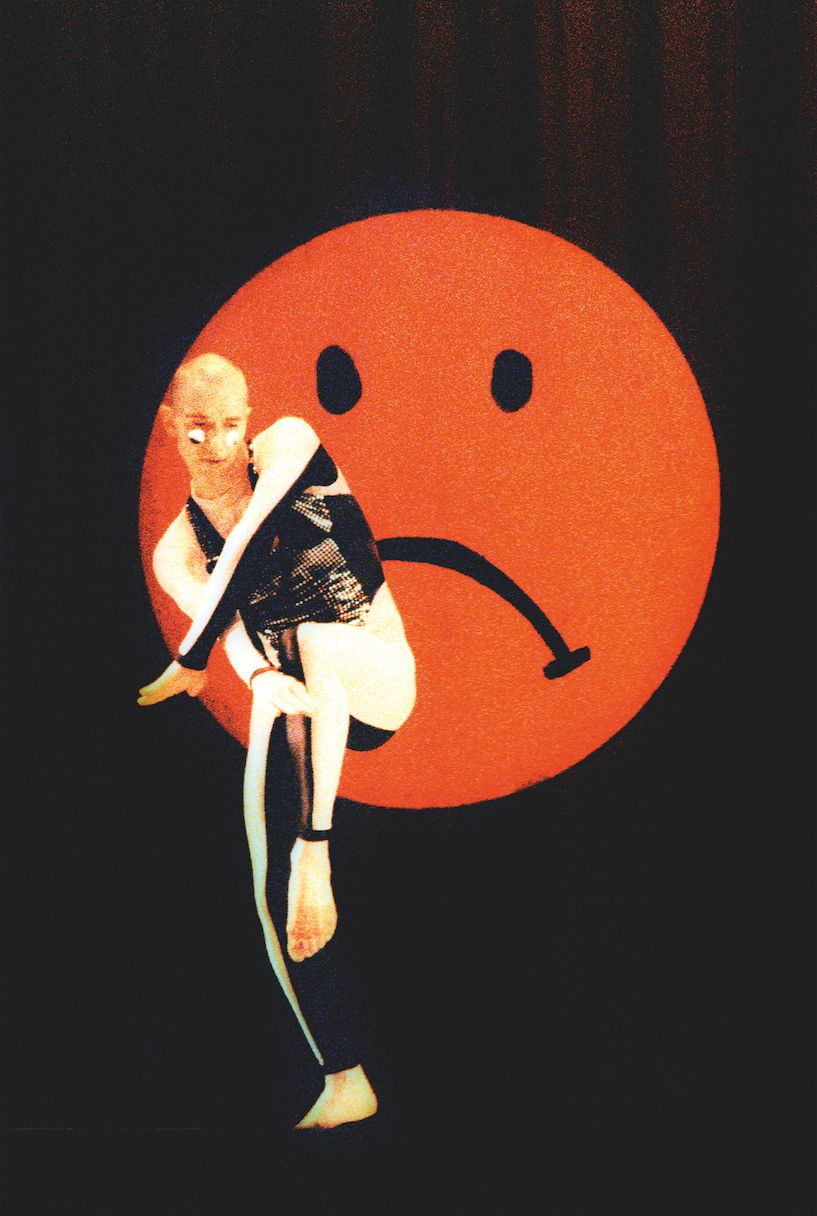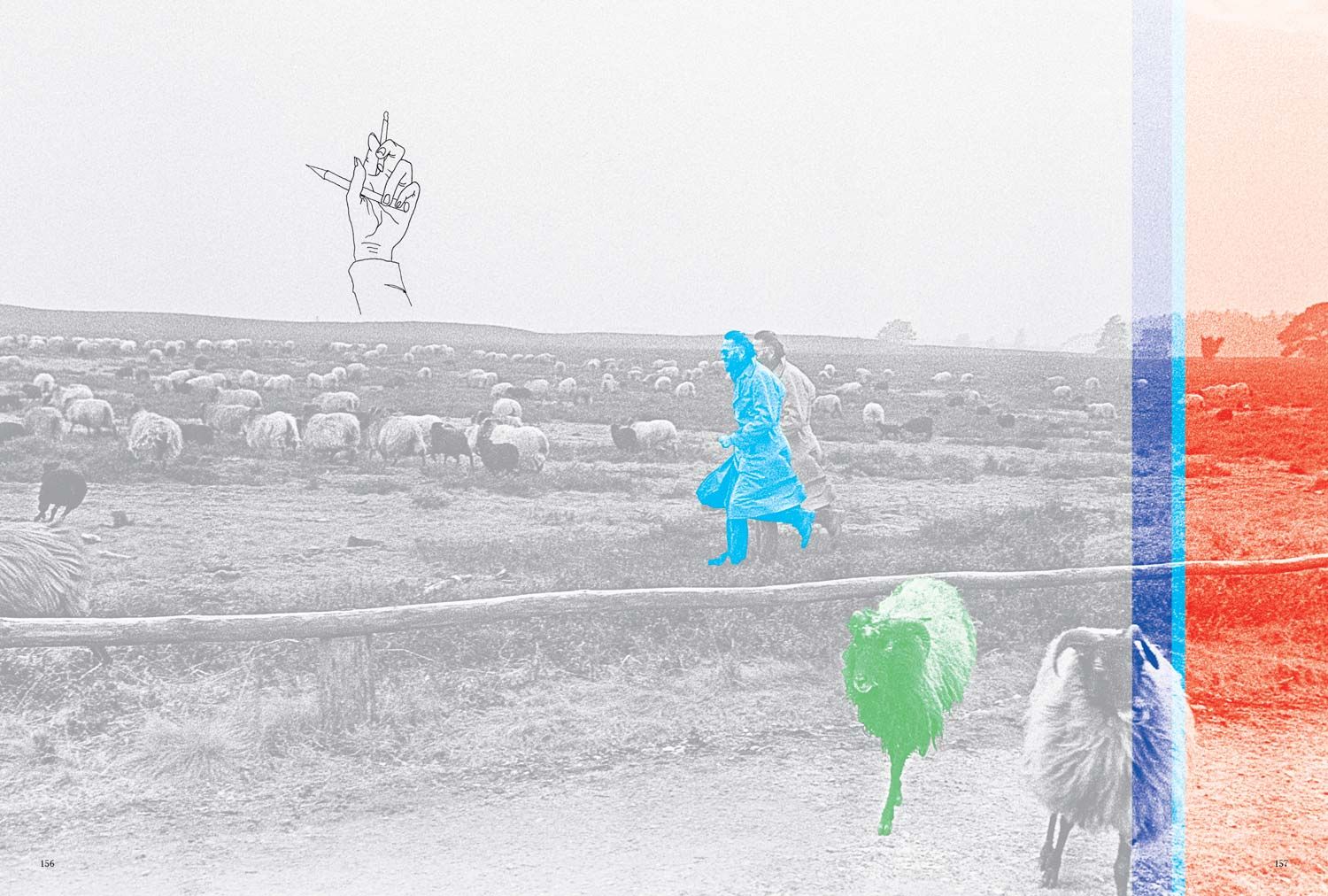Never Walk Alone
|JOERG KOCH
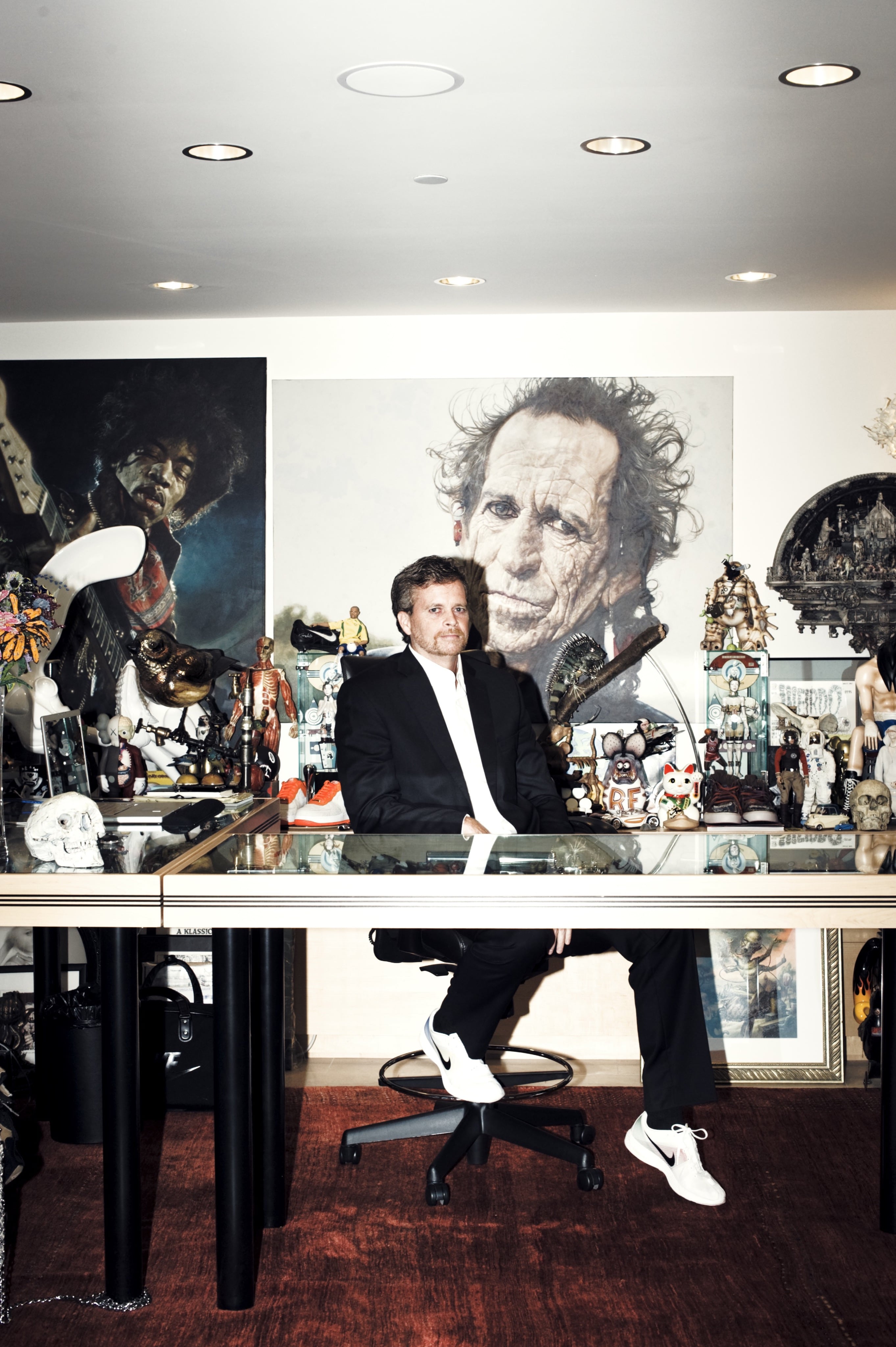
MARK PARKER, President and Chief Executive Officer of Nike Inc., a multi-billion dollar footwear, apparel, and equipment supplier headquartered in Beaverton, Oregon, once summarized his challenge in The Wall Street Journal: “The question is, how do you not let your size become a disadvantage? How do you keep an edge, a crispness, a relevance?”
Any cursory visit to Nike’s campus will immediately reveal that the company remains as single-mindedly focused on the performance of the athlete as it was when it was founded by Phil Knight and Bill Bowerman on a running parcours in Eugene, Oregon four decades ago. Yet Nike has added to its commitment to functional design an advanced understanding of its cultural relevance, navigating a new landscape of creativity, commerce, and charity with Mark Parker at the helm. A Nike lifer since 1979, when he began there as a footwear designer, Parker has a sensibility that has precipitated such cultural projects as “STAGES,” an exhibition inspired by Lance Armstrong’s battle with cancer, organized to benefit his foundation, and curated to bring together a mix of artists from Catherine Opie to KAWS, Aaron Young to Raymond Pettibon. It was in Paris on the eve of the show’s premiere at Galerie Emmanuel Perrotin that I caught up with Parker to discuss Nike’s design strategy for new modes of communication: “keeping an edge” in the 21st century translates, it turns out, into surgical precision, niche market-targeting, and charging each product with a cultural mission.
JOERG KOCH: For me, as an outsider, it’s fascinating to observe your relationship with the LIVESTRONG campaign. How did that come into existence?
MARK PARKER: We’ve had a long-standing relationship with Lance Armstrong as an athlete, going back as early as 1996, before he was diagnosed with cancer. And we were one of the few companies that stayed with him during that battle. In fact, one of the first phone calls he made to let somebody know he had been diagnosed was to his friend at Nike, Scott MacEachern. So, one of the things Lance wanted to do was form a foundation to help raise funds for and awareness of the battle with cancer, helping survivors and supporting research. That was the beginning of the Lance Armstrong Foundation (LAF), and we collaborated with him creatively and practically in order to amplify its impact.
You actually designed the communication process?
Yes – we came up with the yellow band, and put the motto LIVESTRONG on it. Originally, we had the Nike swoosh on it, but felt that it wasn’t appropriate. It was more about transcending cancer and overcoming odds, not branding. It’s been very successful. There are over 70 million being worn to date, and proceeds from sales go right to the LAF. We also have a product collection where proceeds go to the Lance Armstrong Foundation as well. So now, with the marketing, the product, and the whole campaign, Lance has obviously come back to the Tour de France, where his major goal is to raise a global awareness for the LAF. And that’s what the “STAGES” event is all about. It brings art and sports together to form a creative alliance, just as Lance is bringing sports and cancer together.
Do you think that merging social campaigning with selling products is a strong indication of the times? Can these two now go hand in hand?
I think it’s working right now. For example, we’ve spent some time with Bono, who is very active with his RED campaign, which fights AIDS in Africa. He’s working with Converse, which is a company within Nike, on a range of ideas to help RED. I think that the form that these kinds of relationships are taking is changing. We look at ourselves less as a traditional corporate sponsor and more as a creative partner. Often times it comes down to personal friendships, like it does with Lance, so you have to be very close to the people you’re working with. So we start simply with what we think is a good idea, and what we want to experiment with and learn from. Then the power of Nike as a global brand and creative company comes in to amplify that message in a compelling way.
It all seems very hybridized – the Lance Armstrong Foundation could evolve into a political campaign, with him running for a political position, for example. Or it could evolve into something more product-oriented. It’s as though there were an infinite number of social possibilities going in every direction imaginable.
I think that’s true. Our products move in many different directions. We’re very active, for example, with other collaborators and partners in the area of sustainability, trying to get into closed-loop manufacturing, which reduces and eliminates waste. And it’s these relationships with other people and organizations that allow us to do things we couldn’t do on our own. We created a product with Apple, the Nike + iPod Sport Kit, which neither one of us could have done on our own. It takes the best of what they have and the best of what we have to create something that otherwise wouldn’t exist.
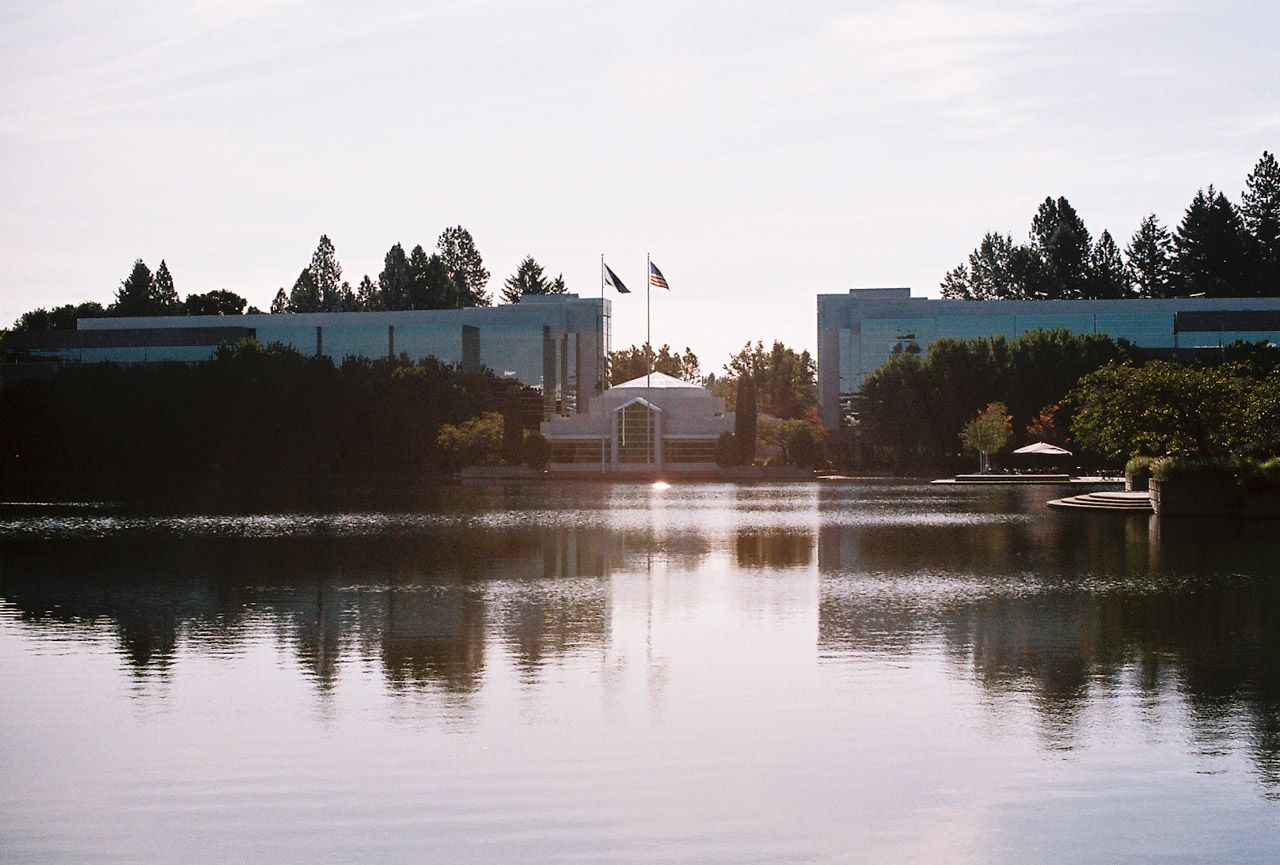
So, Nike is a fantastic engine that constantly produces new meanings and new values. How do you maintain control over such a flexible structure?
Well, we’re solicited all the time for partnerships, and we do have unlimited possibilities in terms of what we can do. But one important thing is to stay focused on the things that matter most, or those with the potential to make the biggest difference. We’ve demonstrated our ongoing commitment to the LAF. We’re also very committed to the Nike Foundation, which we created about five years ago. It’s entirely focused on supporting adolescent girls in developing countries. And the reason we’re focused on this is because it’s the single most effective way to address intergenerational poverty in the world. Through extensive research, it’s become clear that adolescent girls receive the least amount of support out of all the global population, and therefore represent the single-most important factor in causing or limiting poverty. We worked very closely with a former Nike board member called Michael Spence, who also won a Nobel Prize in economics, on the development of the Nike Foundation and it’s been a great success.
What’s the role of the Nike Foundation in your global strategy?
Anecdotally, I’ve been going to the World Economic Forum for years, and this year the Nike Foundation’s meeting was part of the plenary session. It focused on what we call the “Girl Effect” — improve a girl’s life and many more lives benefit: her brothers’, sisters’, parents’, and beyond. And it was one of the most popular and well-attended sessions at Davos, the World Economic Forum. I also met with the World Bank in Washington D.C., and with heads of state from many countries to raise millions of dollars to support the adolescent girls programs in different parts of the world. It’s just one example of a very focused effort that we think can make a tremendous impact. Instead of spreading ourselves over a long list of issues or causes, we focus on a shorter list of priorities. And I think that’s what makes a business successful. It’s the ability to edit, whether it’s about a product, a sports category, a cause, a technology. Possibilities are infinite, but impact demands focus.
When you started in the late 1970s, people probably wouldn’t have imagined that the company would be about yellow wrist bands and doing social work. Could you see Nike becoming even more of a political force? A vehicle for much more controversial issues?
It’s not Nike’s place to be a political force, but we do have a social responsibility. I believe every leader does. For example, we’ve taken a very strong stance on global warming, which maybe isn’t so controversial today, but we’ve set certain goals and targets for ourselves. We’re trying to accelerate political and economic agendas to advance environmental regulations around the world. In fact, sustainability was our other big involvement at the World Economic Forum. I cochaired the sessions with over 30 other CEOs, and I was absolutely shocked – in a good way – at how this is becoming a more important agenda from a corporate standpoint. Actually, in many cases, corporations are starting to lead the way more than government is. The Foundation’s work around adolescent girls is another example. For instance, we’re very connected to the Liberian government and its president, Ellen Johnson-Sirleaf, who’s actively building programs to support adolescent girls in that country. It’s certainly not our main agenda as a company to become politically driven. But when you’re a corporation working in 170 countries, you can’t not be involved with these communities, and give back to them.
When you create all of this content, do you give your products more meaning than you did 20 or 30 years ago?
Content today is created in less traditional forms, particularly as the world becomes more digitally connected. We do various limited-edition shoes for the sneakerhead community around the world, sneaker fans who collect. We make limited pairs of a special shoe and drop it into a shop in Tokyo for example, and within an hour, a picture of it will be up on a blog and kids in London will already be looking for them. When I was a young designer working for Nike many years ago – in the early 1980s – I used to sketch on my way to meetings with our partner manufacturers. People would see me drawing, and ask, “What do you do?” And I would say, “Well, I design shoes.” And one question I would get a lot was, “What more can you do with shoes that hasn’t already been done?” Well, I can tell you now, in 2009, that I see more possibilities for innovation than ever before.
One of the interesting things, before we dive into design, is how you deal with your archive. If you look at the LIVESTRONG products and limited-edition sneakers, these are really iconic, archive pieces. But, correct me if I’m wrong, what you seem to do is not a simple re-edition of the original designs, but more a rewriting.
We do both. We reissue something in a new color or a new material. Or we may actually use new technologies on an old style – for example, we may take a very iconic style, like an Air Max, and update it with new technology like Flywire, which we introduced at last year’s Olympics in Beijing; or Lunar Foam, which is a very technical lightweight foam. Internally, we call this a 1.5. It’s like going back to 1 and bringing it forward .5. We’ll also take a classic style and re-introduce it in its original form, because there are lots of diehards who don’t want their Chucks messed with – and we certainly respect that!
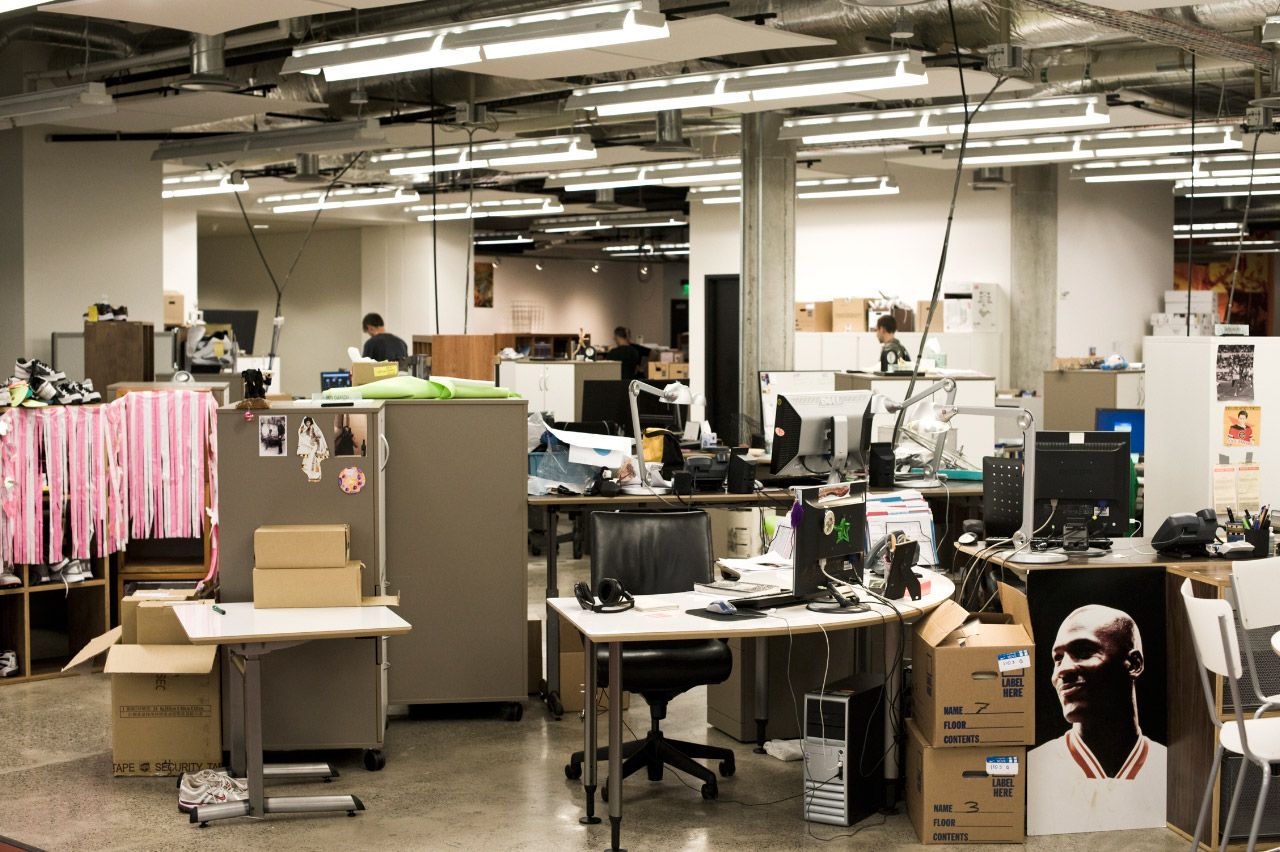
Is there a basic principle behind how you curate the past? Who makes the decisions to do re-editions of certain shoes?
There’s no scientific method or structured process. It’s very organic. We gather our own insights throughout the design process, but we also collaborate with artists and other creatives to tweak and twist some of those iconic styles from the past. For the LIVESTRONG collection, the tattoo artist Mr. Cartoon repurposed the Air Force One. So you got the original Air Force One modified by Mr. Cartoon, and then re-modified again through a LIVESTRONG lens. But our connections are so deep that it becomes a very natural process, connected to an infinite world of possibilities. The relationships we have with athletes offer detailed insights into what they really need, whether it’s emotionally, psychologically, or actively in terms of performance. The shoe Lance is wearing right now is half the weight of the one he wore when he won his last tour. Using modern technology, we’ve given him a huge advantage in just a couple of years. When I started at Nike as a designer, this was always our focus. Bill Bowerman, the co-founder, was obsessed with innovation to the point of being eccentric, which is something I have tremendous respect for. That relationship we have with an athlete, the way we work with them, is ultimately the basis of Nike’s success as a company and a brand.
So how would you say that attitude differs from other major clothing labels’?
There are a lot of fashion labels and big-name designers that want to collaborate with us, and what they like is the fact that we’re very authentic and real. We’re not just creating things without a purpose, and the fact that we are so purposeful and actively solve problems is very attractive to the fashion/design world. I also think there’s a bit of jealousy of something that’s so pure, and performance-based. And when we get it right the pursuit of pure performance will often create something quite unusual or different. But there’s a real purpose behind it, and that creates authenticity.
Has your definition or understanding of design changed from the time you started at Nike as a designer to your position now as the CEO?
In many ways the basic principles are the same. You design in a purposeful way to give the athlete what they really need and edit out what they don’t. And that’s pure design in my opinion. Many young designers are not well developed as editors. Miles Davis once said, “The beauty of music lies within the space between the notes.” The music is allowed to breathe. It’s not about how many notes you can squeeze in, or how many pieces you can put on a shoe. The most beautiful products, I think, are the ones that are all about pure purpose, and the stuff that isn‘t necessary is left out. But it takes confidence and courage to create something beautiful and simple, and resist the temptation to add lots of stuff to it. I think this becomes clearer as you mature as a designer. We have a very organic design process at Nike – we have a group called The Innovation Kitchen, which is more freeform, and has no real agenda. And for me, it’s extremely important to have that. I actually created a similar group when I started at Nike and I was really fortunate to have been able to initiate that at such a young age, creating ideas that didn’t exist yet as opposed to recreating things that were already successful.
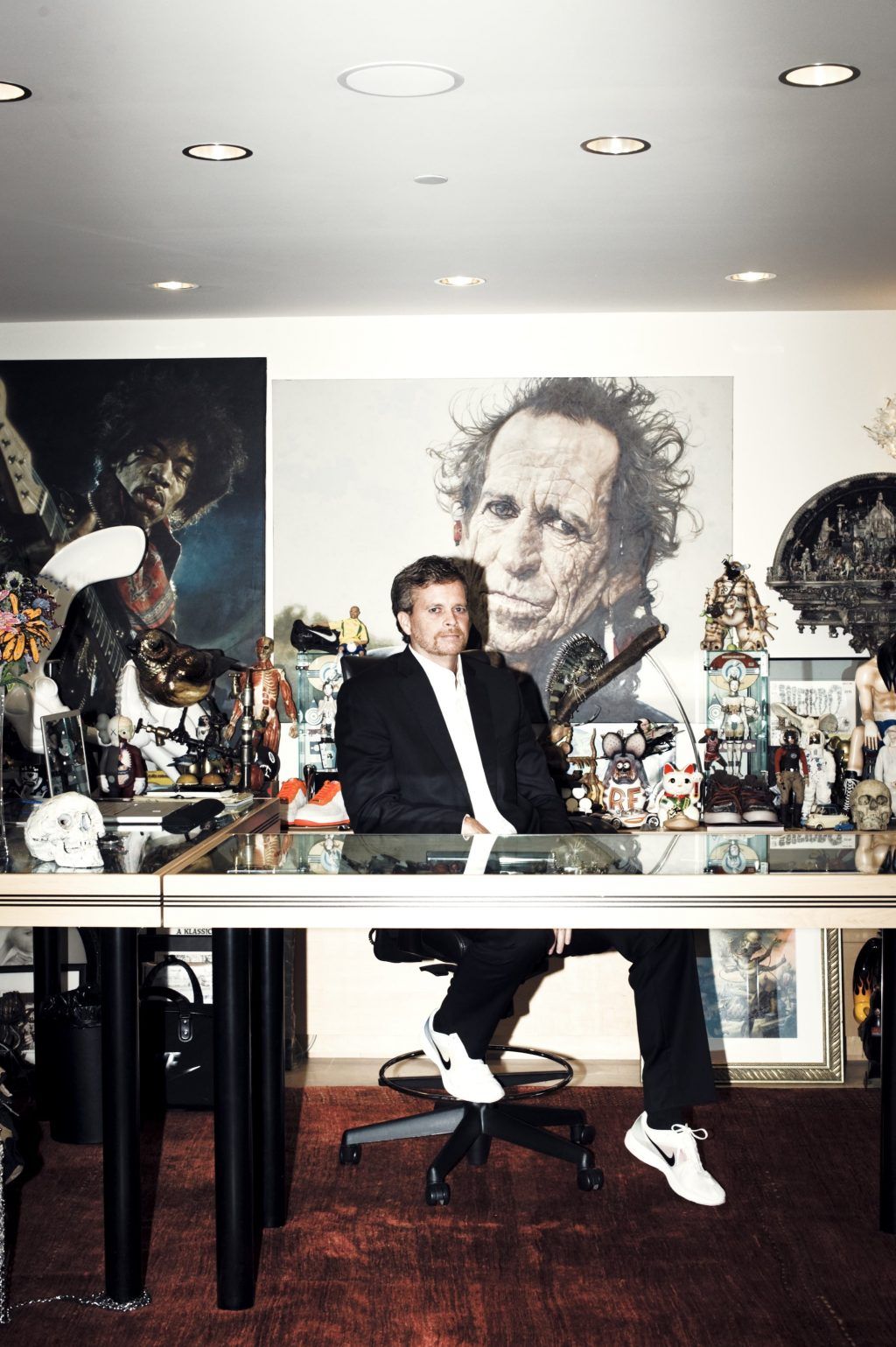
But the trick is to get those products out of that lab.
Yes, and many times they don’t. But that comes with experimenting, and working with uncharted territory. You’re in deep space and you’re not sure what you’re going to find. Our influences can come from very interesting areas: other companies, universities, research projects, NASA. It’s important to have a group that’s not tied down to next season’s agenda. The analogy I use is from the Space Program. We have an “Orbit the Earth” program, which has a regular season-to-season agenda. We have a “Go to the Moon” program, which pushes the boundaries of what people expect. Then we have a “Go to Mars” program, which is really deep space and focuses on redefining what is possible.
What are the guiding questions for that program?
It could be, for example, customization: How do we enable you to put your own creative input into a product to give you something that’s unique and personalized? It could be the integration of digital technology into everyday products, like our collaboration with Apple and Nike+. I think customization and integrated digital technology will become what people expect, so we are committed to being at the forefront of both those areas.
Are you considering the fact that people are becoming fatter and fatter, and that obesity is on the rise in America and even Europe?
We absolutely believe product can play a role in people’s health and well-being. A great example is how products integrated with digital technology can help people achieve simple goals. The company’s mission statement reads: “To bring innovation and inspiration to every athlete in the world.” And there’s an asterisk after “athlete,” with a footnote that says, “If you have a body, you’re an athlete.” Whether you’re just walking around the block or trying to win a Gold Metal, digital technology has the potential to help motivate you to do so. I can’t talk about some of the things that we’re working on in that area at the moment, but I think you’ll be seeing new products that will make a less active person want to be more active. Just buying a shoe off the store wall doesn’t provide that motivation. But if you have someone working with you through the product, enabled by digital technology, a whole other level of motivation is added.
I see you’re wearing the Zvezdochka shoe by Marc Newson, which I gather was a Go-to-the-Moon project – was it just a one-off?
It wasn’t intended to be a one-off. Marc is an industrial designer and when we talked about the idea of collaborating on something, he was really into the idea of modularity. In other words, the shoe can come apart. So we bypassed the traditional way of making shoes, which is cutting, stitching, and cementing parts together. Traditional shoe making is a very primitive process, and it’s been largely the same for 100 years. So I think the future is alternative manufacturing, and new ways to put products together that also fit into customization. For example, with the shoes I’m wearing you can take out the inner sock, and change the colors and cushioning system. It’s an easy way for any consumer to adapt the product to their needs, whether they‘re aesthetic or performance based. I think modularity is where the future will go.
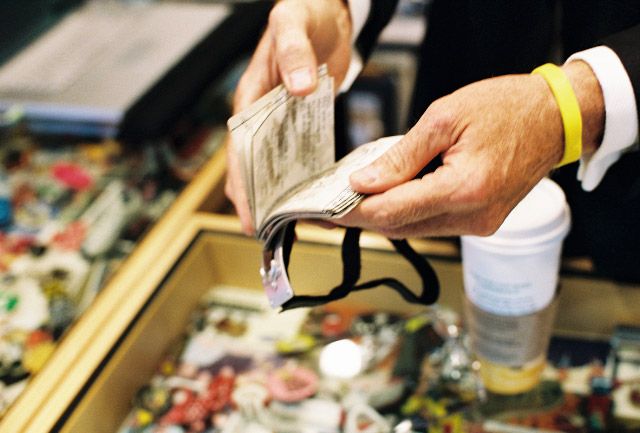
When you mentioned the new mission statement, it made me think of the old one, “To be the number one sports and fitness company in the world.” And my impression is that Nike is no longer that big and bold in the sense of offering heroic gestures and megastars. It seems that the communication these days is much more subtle, almost niche.
We seem to operate with cycles. There may be times when we have more bravado, and we really amplify the athlete in a more bold way, and others when we may choose to be more surgical and subtle.
Perhaps that also has to do with the changes in the communication landscape. But to me, the perception of Nike is no longer as totalitarian as it once was. In the past, especially in Europe or among leftist circles, there was this reading of Nike and “Niketown” as sort of a reinstatement of this big bad Leni Riefenstahl ideal. And you don’t really see that anymore.
The change in our mission statement came out of a meeting with Phil Knight a year ago. We realized that we already had the number one position in the world, so how could our mission statement be what we already were? It’s not that inspiring for us to simply be the biggest and most dominant. Clearly, we’re very competitive, and we like to win. Many of us were athletes with a strong competitive drive, but in a good way. But you’re right, the transition also has to do with the changing communication landscape. We’re now communicating much more surgically with individual communities alongside our broader communications that go out to the world. We organize the company along the lines of categories, and try to become more relevant in each of those categories. A good example of that is skateboarding. Nike wasn’t that relevant in that sport or in that culture, partly because we never committed. We sort of dabbled. And you can’t do that. Those kids are like, “You’re not serious. You’re not real. You’re not committed. So why should I relate to you?” And, of course, they’re right!
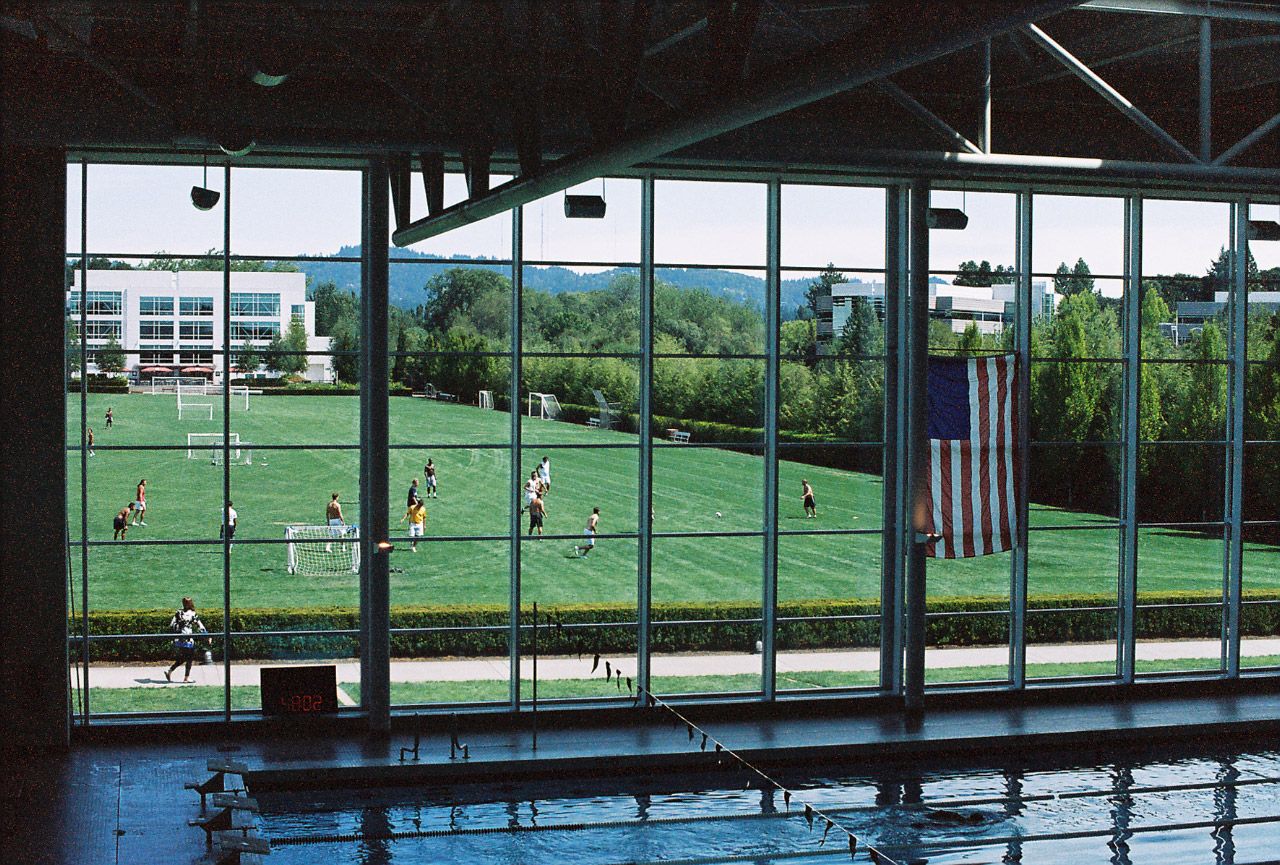
There was an incident in 2005 where Nike appropriated the image and logo from a 1981 Minor Threat album to promote a skateboarding tour, which generated a lot of dissent on the Internet. So suddenly, you have to be aware of what people are blogging. I’m just trying to imagine the amount of information you need to experience as the CEO of a Fortune 500 company involved with so many communities – how important are your personal research trips to cities across the world for staying “plugged in” to these various social strata?
Very important. I do deal with deep operational and financial issues – if I go to New York, I may work with Wall Street, investment firms, and stock analysts all day. But then the next day I may go to Brooklyn to meet with some street art friends. I don’t want to feel like some big corporate head who’s just dealing with finances and operations, detached from the reality of the world and what’s really going on. Whether it’s in Los Angeles, Tokyo, Shanghai, or Beijing, it’s fascinating to actually connect worlds, and create things through connections that are seemingly odd. For instance, I brought my friend Lenny (“Futura”) to the Tour [de France] a few years ago. He was a street artist and bike messenger living in New York. We were all hanging out with people like Lance, and Robin Williams, and there was this great synergy. Then after the tour, Lance called and said, “That Lenny, I really like him. He’s really different and cool.” Futura later went on to design the graphics on Lance’s bike in the next Tour, and Nike collaborated with him as well to make some products that we showed here at Colette. It’s all about relationships.
When you travel the world on your research trips, do you realize that Nike means something different to everyone? There’s a general ethos obviously, but you are still locally adapted.
Well, we don’t like to simply import big campaigns around the world. I remember spending time in China years ago, maybe four or five years ago, and one of the things I did was meet with 50 of the top creative people in China – architects, photographers, journalists, street artists, fashion designers, industrial designers – and we talked for hours in a big circle. The big questions were: What is it like to be creative in China? What’s important to the Chinese? The big theme that came through everyone’s conversation there was: we want to have our own voice, and not just be overwhelmed with this tsunami of Western campaigns. So, we were very inspired by that and created a communications approach in China that was more about Chinese youth and what motivates them, but through their eyes and their voices. They were little vignettes that became TV commercials, and also longer five-minute videos that were shown online. No other company was doing that, and it really resonated. And frankly, the process of connecting with that youth makes us a stronger company. Because we get those insights, and we blend them with other insights from around the world to create things that are really different.
You mentioned that you don’t consider Nike an American company anymore.
No, not at all. Great ideas come from all around the world, and I think we’re more globally aware of important issues and opportunities, and how to connect the dots around the world to make a bigger difference – whether it’s how we combine cultural influences or how we collaborate and innovate around environmental sustainability and other important global issues. And we’ve become a much better company because of it. If you look at the management of the company, and its make-up, it’s truly more diverse in that respect.
Credits
- Interview: JOERG KOCH
- Photography: OLIVER HELBIG
